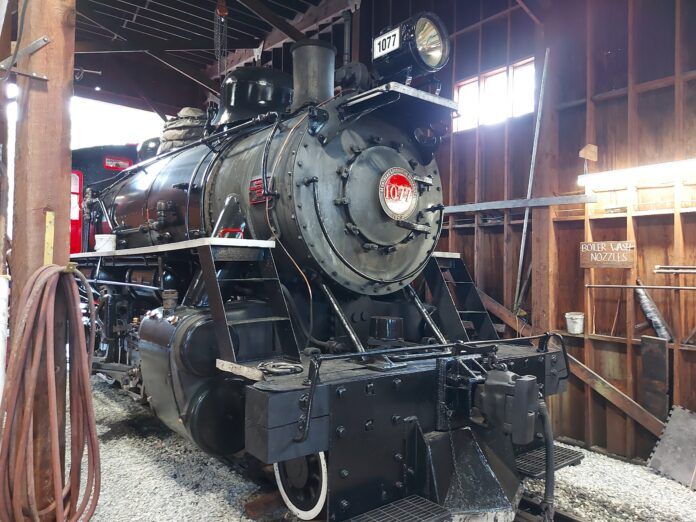Fort Steele’s train crew is working hard to get the #1077 locomotive ready for its 100th year in operation.
“We’re doing a lot of cosmetic work because we’re waiting for confined space guys, ultrasound testers and welders to get in there and do their thing,” said Gene Roshau, department manager and locomotive engineer.
“Organizing all three of those contractors all at once is kind of hard to do, so in the downtime, we’re redoing everything with painting and cleaning. We’re just kind of waiting to get the boiler fired up and then we’ll work on mechanical stuff if anything is needed.”
The train engine was built in 1923 by Montreal Locomotive Works. The #1077 was used by several different companies in B.C. to move logs throughout its service life up to 1969.
“It worked for MacMillan Bloedel on Vancouver Island for quite a few years before it was retired,” said Roshau. “They donated it to the B.C. government where it sat as a static display for about 10 years, until 1979 or ’80. They donated to Fort Steele Heritage Town and it’s been here ever since.”
According to Fort Steele, the #1077 was the last made-in-Canada logging steam engine in operation when it was taken out of service. It was also among the last steam locomotives in general actively running in North America at the time.
Prior to being put back into service, the train’s boiler was rebuilt by Herb Harkins at CP Rail’s Drake Street Roadhouse in Vancouver.
In honour of Hawkins’ work, the #1077 was decorated with a plaque dedicated to the man behind its restoration.
Now Roshau and the crew at Fort Steele are tasked with keeping the antique behemoth alive.
“Every five years we rip it right down and we get boiler testers to come in and do a magnetic particle contrast test on the inside of the firebox on welds and cracks on the tubes,” said Roshau.
A magnetic particle contrast test is used to find any faults in the locomotive’s engine so the team can focus their efforts where repairs are needed.
“We also do an ultrasound every six to eight inches of the boiler to find out sheet metal thickness, and that gets sent to an engineer who determines how much pressure we can operate with,” explained Roshau. “He’ll determine just by the thickness of the metal whether we can go back to 185 psi or not.”
Replacement parts for a 100-year-old engine can be hard to come by. Roshau explained that the process is more complicated than simply going to an automotive shop or junkyard.
“The last thing we did was a horse trade with Heritage Park in Calgary. They needed a compressor we had, and we traded that for some brake shoes that we needed,” said Roshau. “For other things, if it’s not too big of a project, we can make them ourselves.”
Roshau hopes to see Fort Steele’s #1077 locomotive hit the rails in time for Father’s Day on June 18.




